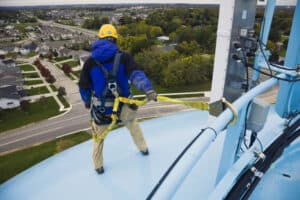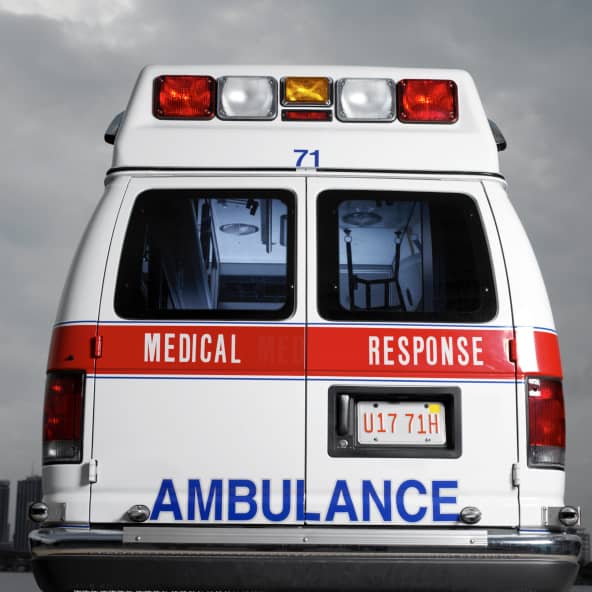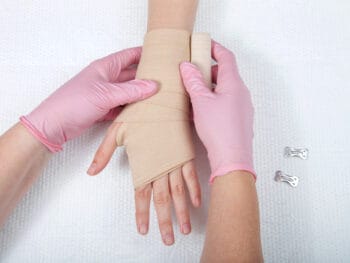
Startling Statistics
In December last year, the Bureau of Labor Statistics issued some sobering statistics: Fatal falls accounted for 17% of total worker deaths in 2017 (887 deaths), which is the greatest number of fall-related deaths recorded in the 26 years of their census. Moreover, fatal falls are by far the leading cause of death in the construction industry (not including traffic collisions, which are counted in a different category), with nearly 40% of construction worker deaths.
Click Link to Access Free PDF Download
“13 Research Studies to Prove Value of Return-to-Work Program & Gain Stakeholder Buy-In”
Fall-related deaths are preventable. And having a fall protection rescue plan isn’t just a smart idea- it’s the law.[1] Workers can survive falls from heights by using PPE fall arrest systems (OSHA specifies PPE must be used six feet above a lower level for construction, whether that be above a roof or a hole, and four feet in general industry), but fall protection PPE is not enough. Fall deaths can occur even after PPE does its job.
In some cases, workers can successfully self-rescue using their own PPE. In other instances, assisted self-rescue, that is, PPE plus a mechanical rope/hauling system, is possible. Both of these scenarios assume that the worker who fell is conscious and physically capable of aiding themselves. A third scenario envisions a fall where the worker is unconscious or has sustained injuries that would prevent them from aiding themselves; this means a fully assisted rescue is necessary.
In the scenario where the fall victim is unconscious, we can immediately see how the risk of death may be imminent. What may not be so obvious is the additional risk of suspension trauma (also called “harness hang syndrome”), which is fast-acting and can be lethal- even for a fall victim who is initially conscious and uninjured. The combination of a person’s suspended weight in a vertical position and limited ability to move (and thus maintain blood circulation) can result in serious injury or death. The Emergency Medicine Journal has noted that in harness design experiments, loss of consciousness occurred in seven to 30 minutes.[2]
The American National Standards Institute (ANSI) recommends fall rescue in six minutes or less. Six minutes is not enough time for most local 911 emergency medical services to respond and rescue. Additionally, 911 requires special resources for fall rescue (both in terms of equipment and trained personnel). Employers should not automatically assume that their local EMS has these resources available at the drop of a hat. Fall rescues, then, must be performed by trained onsite personnel who can react more quickly.
Fall Rescue Plans and Culture Shifts
But since job sites are often frequently changing environments, how can employers keep up with the demands of having an effective, up-to-date fall protection rescue plan? And what does this mean for workforces?
To begin with, employers must recognize and facilitate the safety culture shifts that are needed for fall protection rescue at their job site. Creating and maintaining an effective fall protection rescue plan causes a safety culture shift for both the employer and the workers. The frequency of these safety culture shifts will be as often as hazards, or potential hazards, change at a job site.
The first safety culture shift comes with the move from relying on 911 for a fall rescue plan to embracing an onsite, in-house rescue plan. This shift is foundational, and both employers and workers must embrace it together. If they are not on the same page in terms of safety outlook, little progress will be made.
FREE DOWNLOAD: “13 Research Studies to Prove Value of Return-to-Work Program & Gain Stakeholder Buy-In”
Employers should remember that OSHA cites companies both on the basis of unabated workplace hazards and on the basis of unresolved potential workplace hazards. It’s good for employers to adopt OSHA’s recommendation and exercise their fall rescue plan, that is, have a “trial run” of an actual fall emergency;[3] this exercise is best conducted by outside qualified rescue experts.
Another safety culture shift comes with inviting qualified rescue experts to audit and evaluate a location’s existing fall protection rescue plan; these experts can help employers see where gaps and holes (literally and figuratively!) exist. From there, qualified rescue experts can create a site-specific fall rescue plan that incorporates that location’s SOPs and existing emergency action plan.
Amazing Things Happen When Workers’ Become Rescuers
More still, qualified rescue experts train workers to become authorized rescuers. This is also an important safety culture shift. When workers themselves become rescuers at their site, amazing things happen for morale and strength of workforce unity. Incentives and perks invite workers to become part of a rescue team, where they can take greater ownership of their work environment. This personal investment is a positive, active form of engagement for fall rescue plans (whereas waiting for 911 is passive).
Safety culture shifts are a reality for all job sites because hazard assessments, required by OSHA, must be comprehensive and continuous.[4] Whenever a new hazard is identified, policies, procedures, and programs must be updated. These updates necessitate shifts in the safety culture of a workplace. Fall protection rescue plans shouldn’t be viewed as an inconvenient “one more thing” to add to the list of updates, but rather should be viewed as part of an integrated whole that will protect workers and save lives.
Author Raymond Loch, Safety Training Services Leader, Medcor, is a certified safety professional with over 32 years of experience as an instructor, operator, and consultant in safety, emergency preparedness, and emergency response for general industry, construction and fire service. He has developed and implemented training programs for OSHA compliance, technical rescue, and industrial fire suppression. Ray has worked with Fortune 100 firms and with small companies and government entities. . http://medcor.com. Contact: raymond.loch@medcor.com
Author Jason Funk, Worksite Safety Coordinator, Medcor helps employers reduce the costs of workers’ compensation and general health care by providing injury triage services and operating worksite health and wellness clinics. Medcor’s services are available 24/7 nationwide for worksites of any size in any industry. Headquartered in McHenry, Illinois, the company operates 174 clinics and provides triage services to over 90,000 worksites across all 50 states and US territories. Medcor’s triage methods are covered by U.S. & foreign patents, including U.S. No. 7,668,733; 7,716,070; & 7,720,692; other patents pending. Medcor is privately held. Learn more at www.medcor.com.
[1] See OSHA standard 1926.502(d)(20)
[2] Caroline Lee and Keith M. Porter, “Suspen sion Trauma,” Emergency Medicine Journal 24, no. 4 (2007): 237-238.
[3] OSHA Appendix E to Subpart M, “Non-Mandatory Guidelines for Complying with 1926.502(k),” Sample Fall Protection Plan.
[4] ‘See OSHA standard 1910.132(d)














